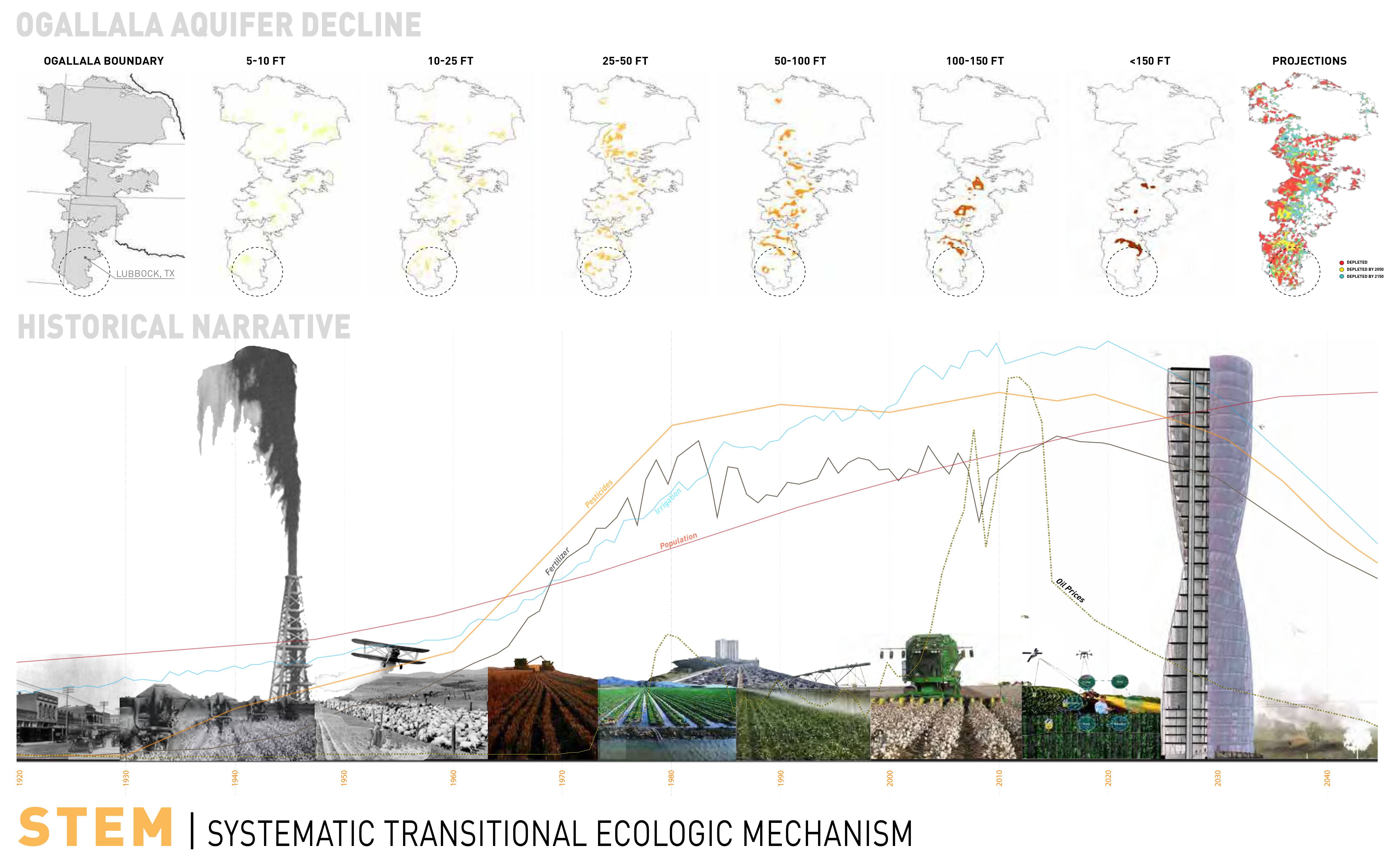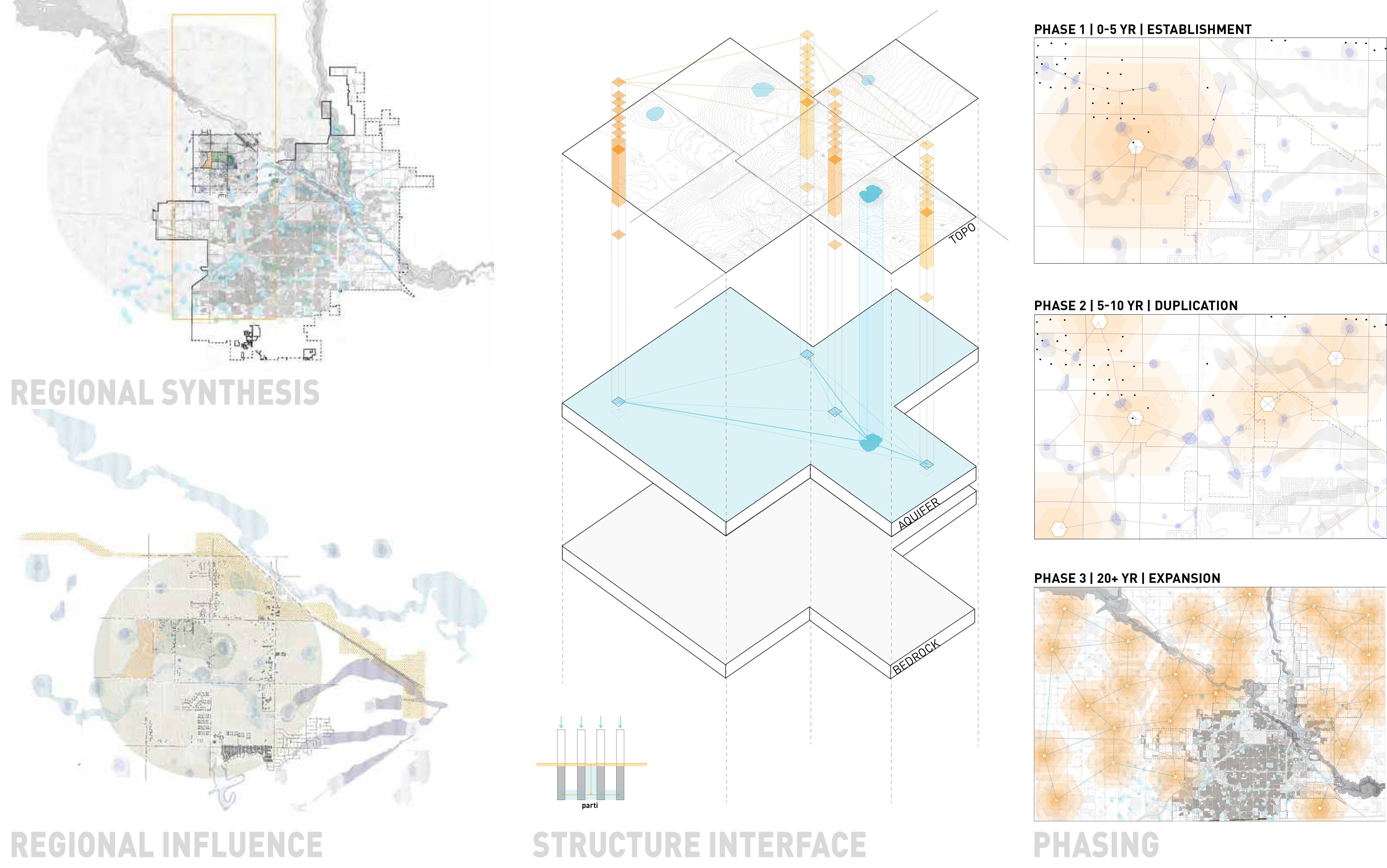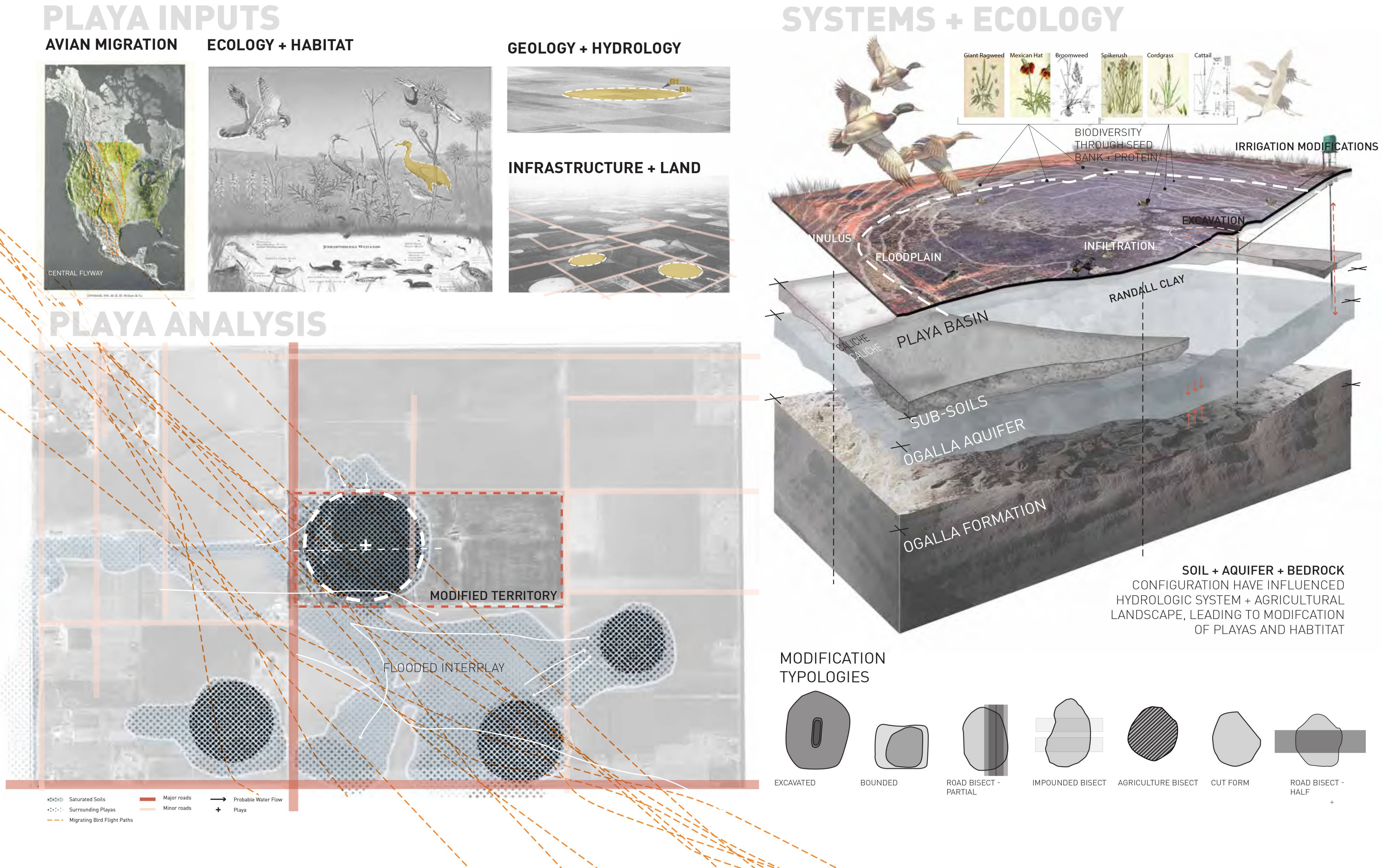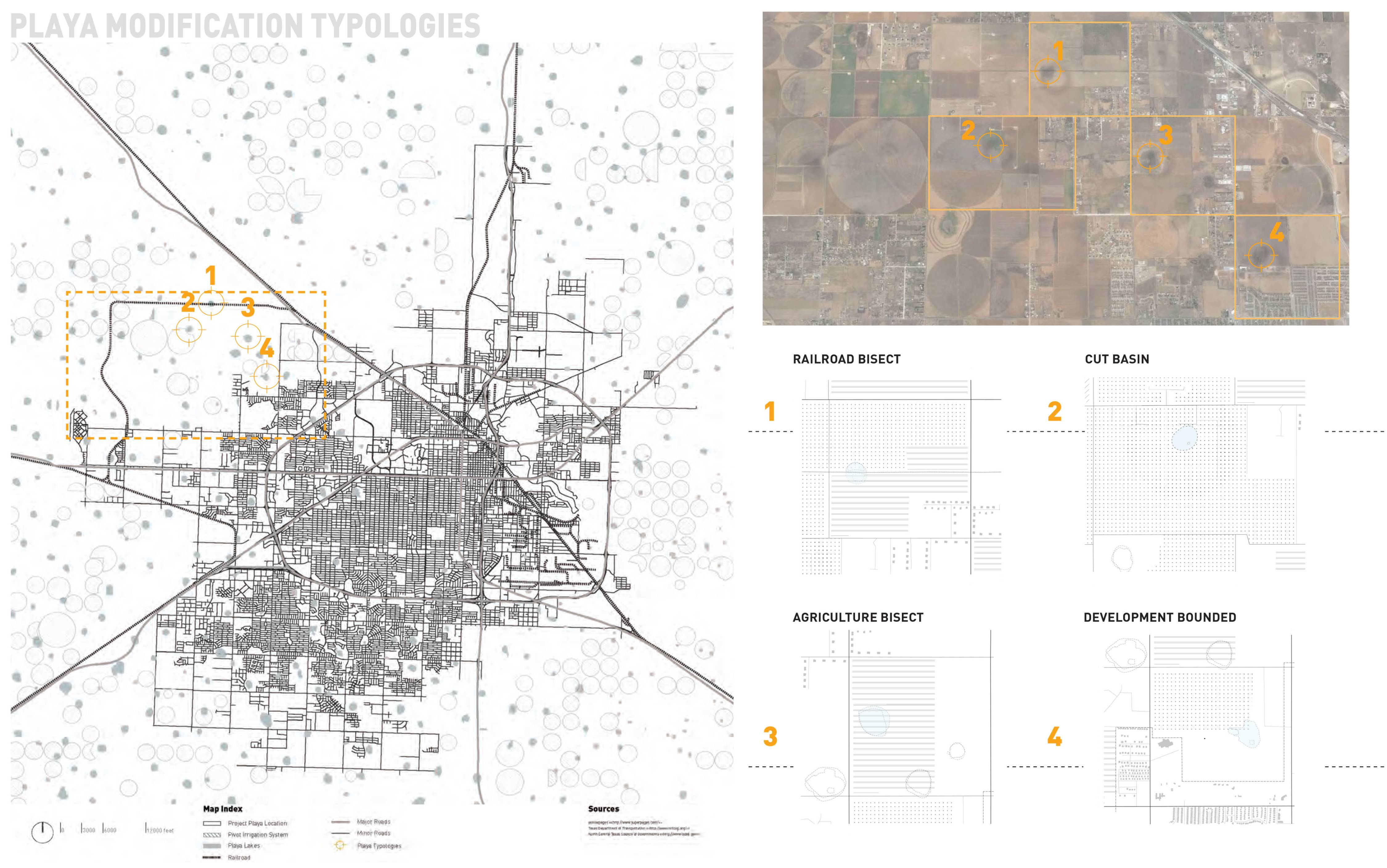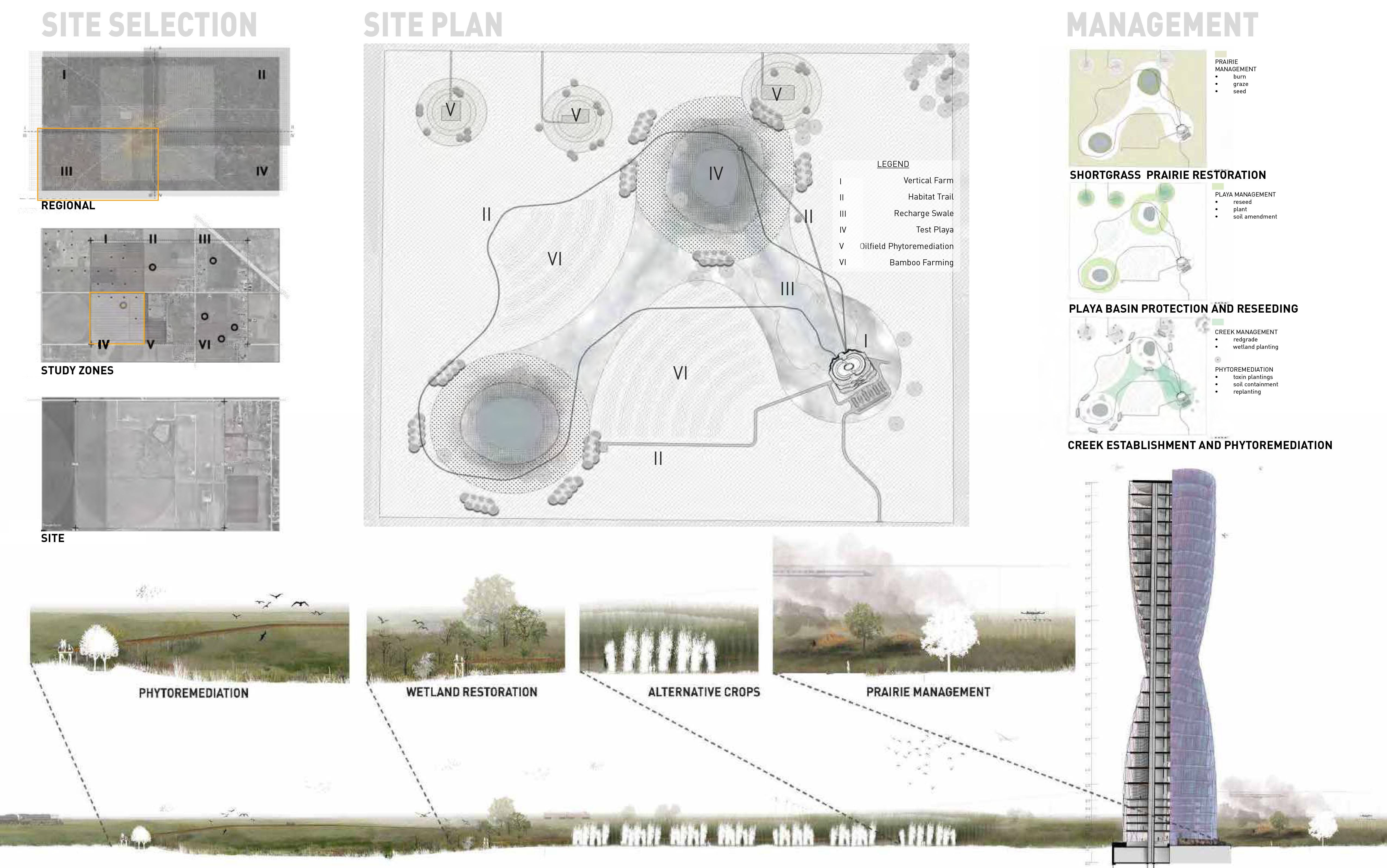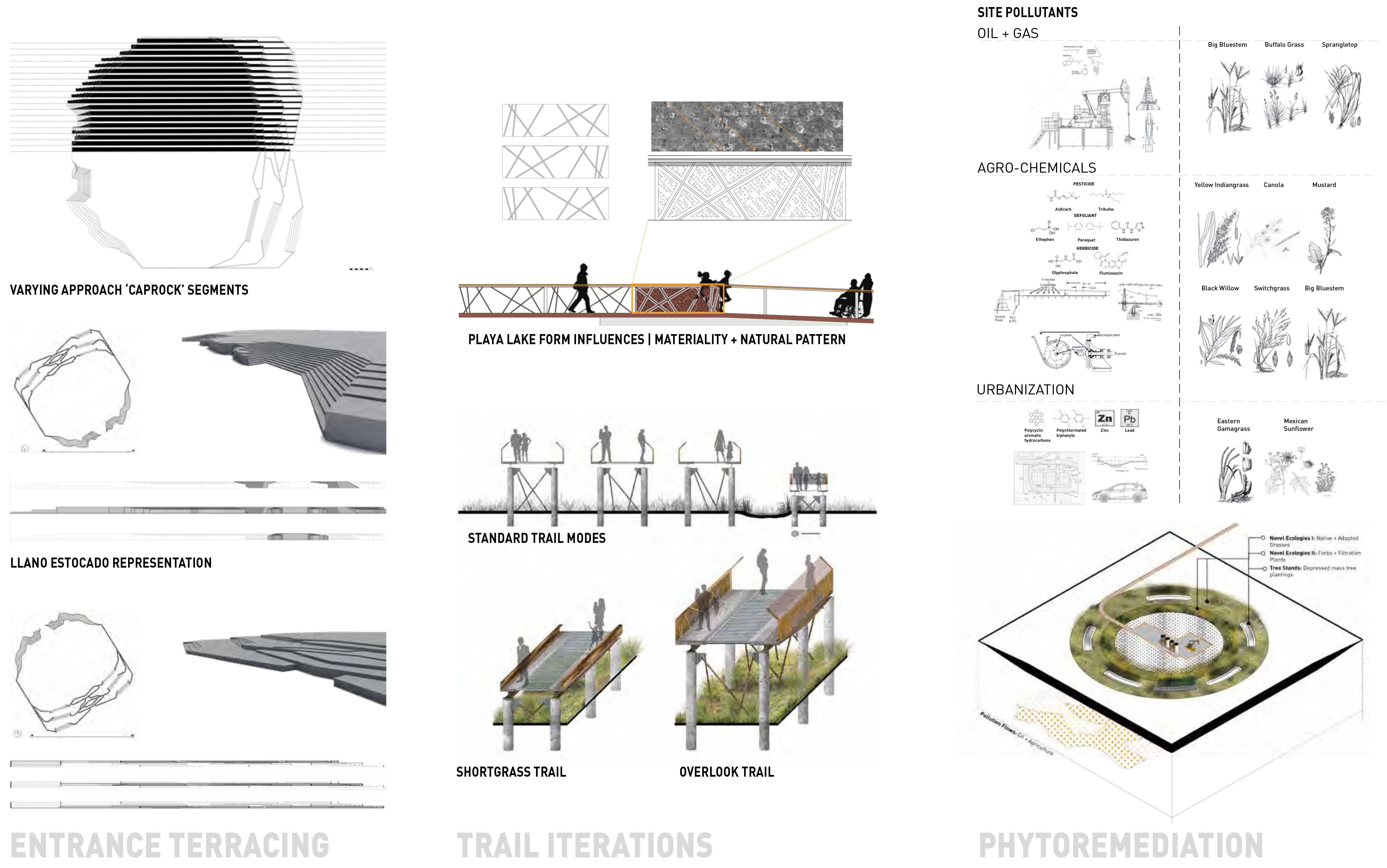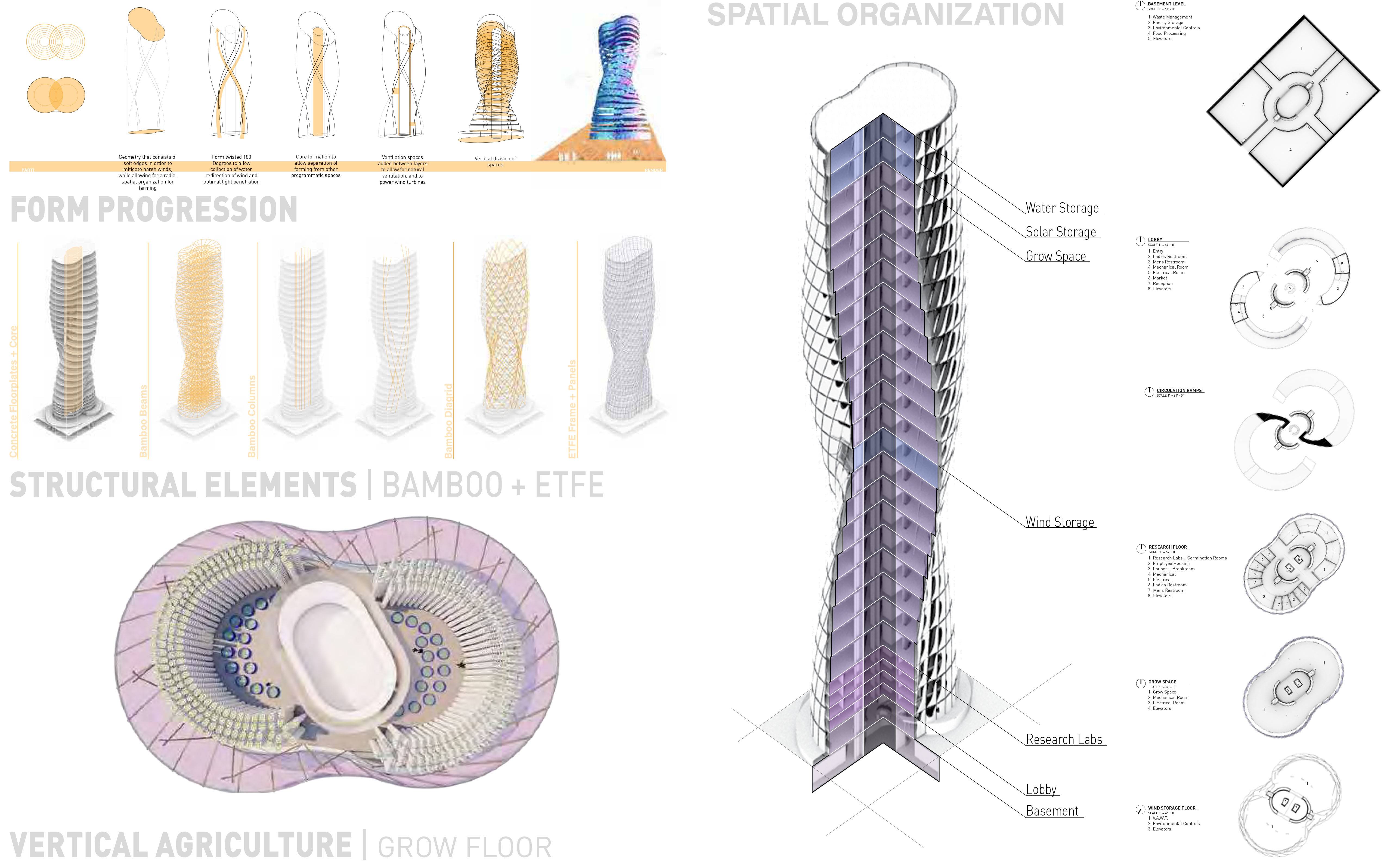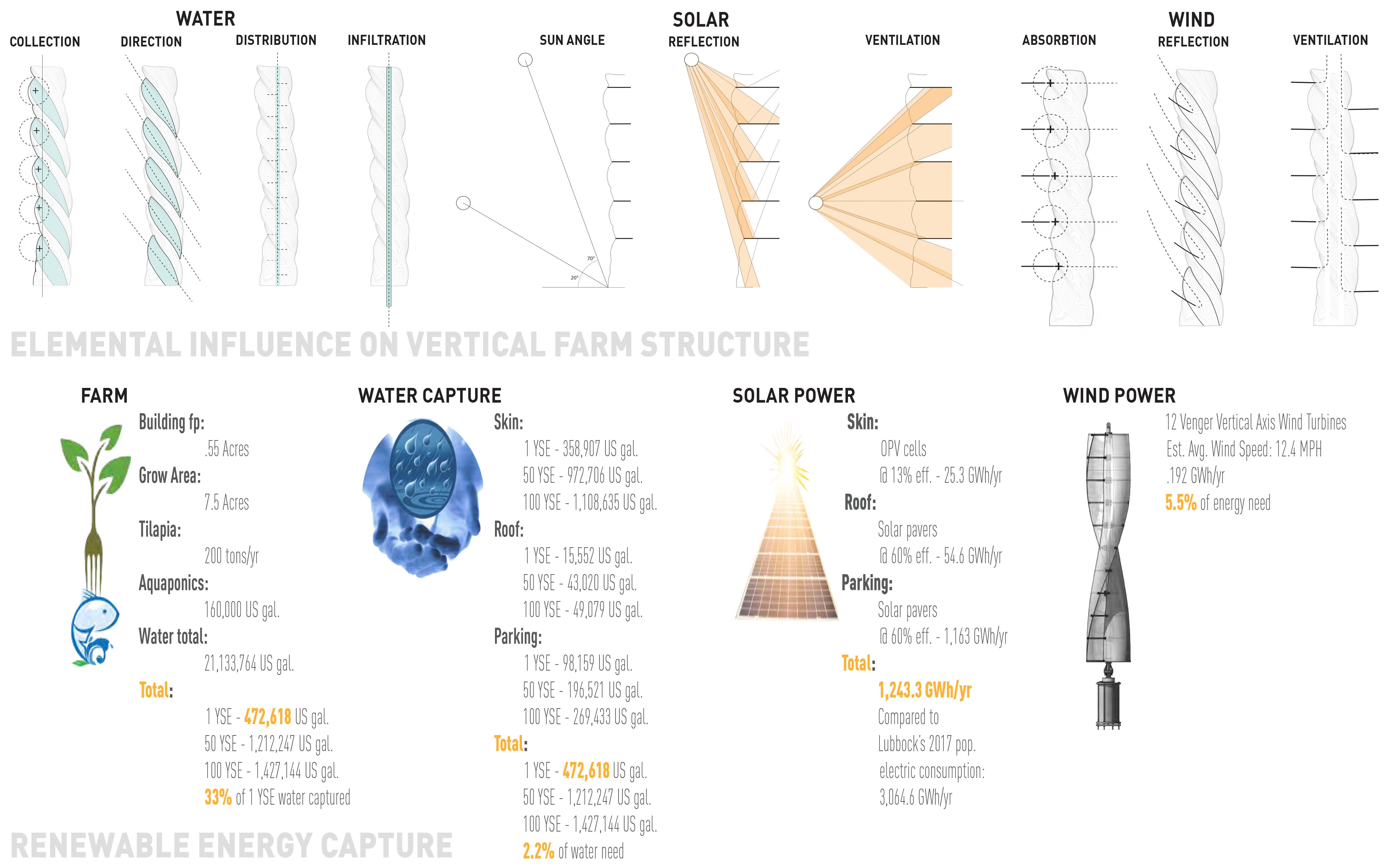2020 Texas ASLA
Excellence Award
STEM
Systematic Transitional Ecologic Mechanism
Examining the causes of the playa lake degradation within Lubbock County determined that agricultural infrastructure is the underlying cause of the negative impacts to these ephemeral bodies of water. How then to best reorganize, the existing agricultural infrastructure to enable the West Texas landscape to re-emerge as a functional, vibrant and productive system? It has been estimated that by the year 2050 food need will increase by 70%, with water and energy needs rising 30-40%. Due to the stagnation of agricultural practices, major changes are a necessity.
To address the main focus, the degraded playa lake system, we investigated restoration at a site scale as well as a larger network scale. Proposing to move agricultural infrastructure vertically, opening the land to rehabilitation and critical habitat, creating higher value square footage farming and reducing the high volume of water used in current agricultural practices. To accomplish this, our design is comprised of an innovative structure to collect and harness the natural elements of the sun, wind and water.
Through various technologies of which the structure will be comprised, water will be harvested, stored onsite and used for, among other things, the irrigation of plant material being grown within the structure. When an excess of water is available within the system, a flush to the adjacent playa lakes or other bodies of water will be sent. With the landscape being able to rehabilitate itself, the playa lakes will be less affected by agricultural practices, allowing for the underlying aquifer to be replenished at a faster rate. This reimagining and reconstructing of the West Texas landscape, will allow it to re-emerge as a functional and productive system.
Team
Grant Huber-DoLA
Christopher Perez-DoLA
David Tomlinson-DoLA
Courtney Bishop-Architecture
Landscape Architecture
-
Address
2904 15th Street, Lubbock, TX 79409 -
Phone
806.742.2858 -
Email
larc.admin@ttu.edu

